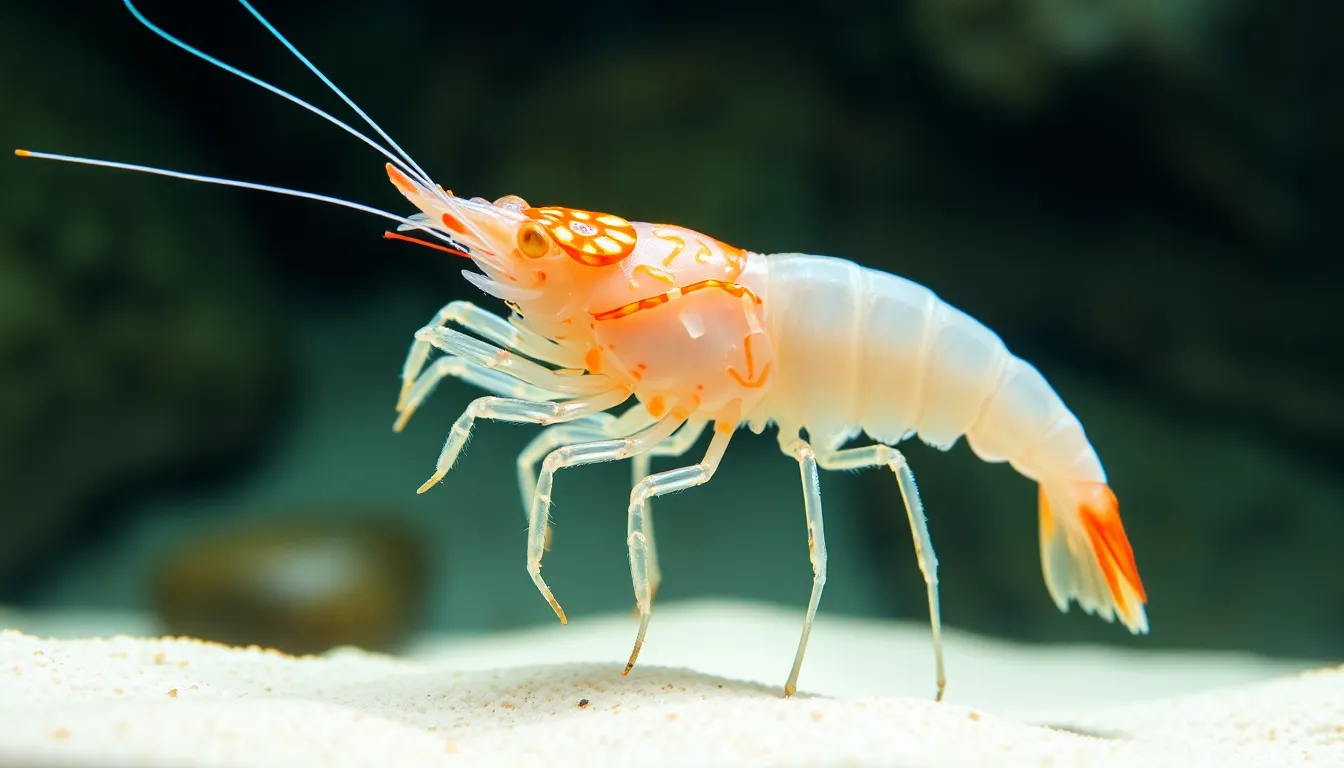When it comes to seafood, shrimp often takes center stage, but it raises a tantalizing question: is a shrimp a fish? This crustacean may be a fan favorite for shrimp cocktails and stir-fries, but it’s time to dive into the murky waters of marine classification. Spoiler alert: shrimp aren’t fish, but they sure know how to throw a party!
Table of Contents
ToggleUnderstanding Shrimp and Fish
Shrimp and fish belong to different biological classifications. Clarifying these distinctions helps understand their unique characteristics.
Defining Shrimp
Shrimp are small, aquatic crustaceans classified under the order Decapoda. They possess elongated bodies and flexible shells. Common types of shrimp include Pacific white shrimp and brown shrimp. Found in both saltwater and freshwater environments, shrimp serve as an essential part of many marine ecosystems. They play a crucial role in the food chain, acting as both prey and scavengers. Shrimp are also known for their high protein content, making them a popular seafood choice. Many dishes showcase shrimp, highlighting their versatility and culinary appeal.
Defining Fish
Fish represent a diverse group of aquatic animals characterized by gills, fins, and scales. Classified under the phylum Chordata, fish include various species, such as salmon, tuna, and goldfish. They inhabit both freshwater and saltwater habitats, ranging from rivers to oceans. Fish breathe through gills, extracting oxygen from water. Most fish are cold-blooded, relying on environmental temperatures to regulate body heat. Fish also contribute significantly to human diets, often praised for nutritional benefits such as omega-3 fatty acids. Understanding these features emphasizes the distinct differences between fish and shrimp.
Biological Classification

Shrimp and fish belong to different biological groups, illustrating significant distinctions in their classification. Understanding these differences clarifies why shrimp aren’t classified as fish.
Taxonomy of Shrimp
Shrimp fall under the order Decapoda, within the class Malacostraca. They are part of the phylum Arthropoda, which includes animals with exoskeletons. Notably, shrimp possess ten limbs, hence the name “Decapoda.” Common types like Pacific white shrimp and brown shrimp showcase this classification and vary in habitat and behavior. Their roles in aquatic ecosystems are vital, serving as both predators and prey, establishing them as key components of food webs.
Taxonomy of Fish
Fish, categorized under the phylum Chordata, encompass a diverse group of aquatic animals. Their classification includes multiple classes, primarily Actinopterygii, which covers the majority of fish species. Gills, fins, and scales characterize adult fish, enabling them to thrive in various aquatic environments. Examples like salmon and tuna highlight their diversity and ecological roles. This classification system reflects the essential traits that differentiate fish from other aquatic organisms, including shrimp.
Differences Between Shrimp and Fish
Shrimp and fish differ significantly in various aspects, including anatomy, physiology, habitats, and adaptations.
Anatomy and Physiology
Shrimp possess exoskeletons, which protect their bodies and provide structural support. Their anatomy includes ten limbs, allowing for diverse movement and manipulation. Gills enable them to extract oxygen from water. Fish, conversely, feature internal skeletons made of bone or cartilage. Gills also facilitate breathing, while fins assist in swimming. Unlike shrimp, fish have scales covering their bodies, providing additional protection. These distinct anatomical features underscore how shrimp and fish adapt to their environments.
Habitats and Adaptations
Shrimp thrive in diverse aquatic environments, including oceans, rivers, and estuaries. They prefer shallow waters, where plenty of food sources exist. Many species exhibit adaptability, allowing them to survive in varying salinities and temperatures. Fish inhabit both freshwater and saltwater ecosystems. They occupy numerous niches, from coral reefs to deep-sea environments. Adaptations in fish include specialized fins for navigation and the ability to regulate buoyancy. These differences in habitat preference and adaptations highlight the unique ecological roles of shrimp and fish within their ecosystems.
Common Misconceptions
Misunderstandings about shrimp and their classification often arise in culinary and scientific discussions.
Cultural Views on Seafood
Cultural perceptions significantly influence how people categorize seafood. Many individuals think of shrimp as fish due to their prevalence in various cuisines, such as shrimp scampi and sushi. Cultural traditions may define seafood broadly, making distinctions between shrimp and fish less important. In seafood markets, the term fish often encompasses a wide range of aquatic species, contributing to confusion. Culinary practices sometimes group shrimp with fish, leading to misconceptions about their biological classification. Popular dishes elevate shrimp to fish-like status, reinforcing the assumption.
Scientific Misunderstandings
Scientific discussions often encounter confusion with shrimp’s classification. Taxonomically, shrimp belong to the phylum Arthropoda, while fish are part of Chordata. Differences in anatomical structures underscore this distinction. Gills, fins, and scales characterize fish, but shrimp have exoskeletons and limbs instead. These distinct features highlight the essential classifications within aquatic species. Misunderstandings persist, even in educational settings, leading people to incorrectly group shrimp with fish. Awareness of the differences can clarify these common misconceptions.
Understanding the differences between shrimp and fish is crucial for appreciating their unique roles in aquatic ecosystems. Shrimp are fascinating crustaceans with distinct anatomical features that set them apart from fish. While both are popular in culinary dishes, their classifications highlight significant biological distinctions.
Recognizing these differences not only enhances knowledge but also helps dispel common misconceptions. This awareness contributes to a more informed approach to seafood choices and encourages a deeper appreciation for the diversity of marine life. Whether enjoyed in a meal or studied for their ecological importance, shrimp and fish each play vital roles in the underwater world.





